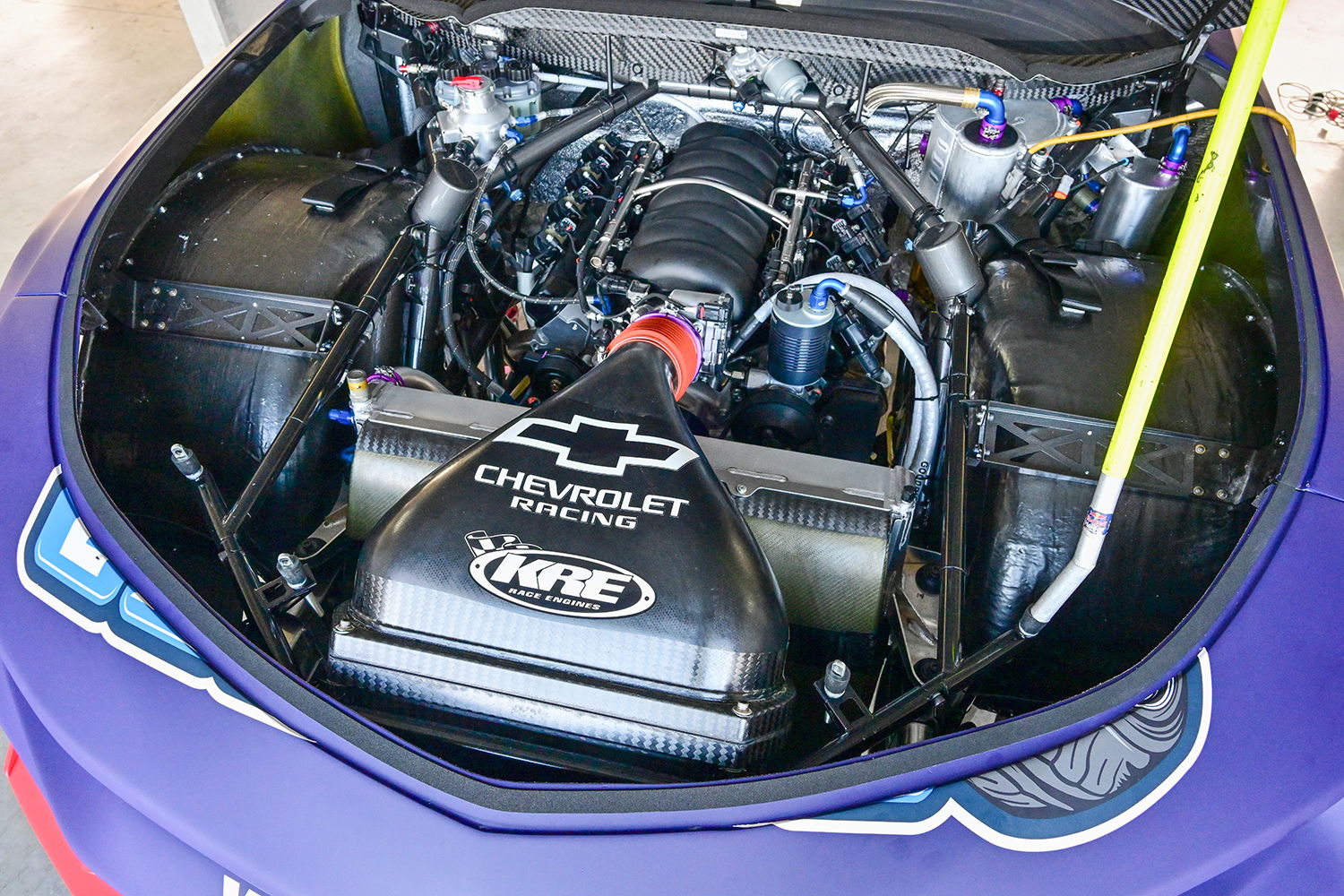

Teams are now allowed to share their pool of engines between their cars, whereas they were previously assigned to a particular entry.
For example, Triple Eight Race Engineering may now use any of four motors for either of Broc Feeney or Will Brown at any given time whereas, previously, each would have had their own two exclusively.
Rule D19.1.1 of the 2024 Operations Manual reads, “It will only be permitted to list a maximum of four (4) engines per two (2) TRC’s that form a ‘Team’ as defined by the Teams Championship.”
That rule read in the 2023 Operations Manual, “It will only be permitted to list a maximum of two (2) engines per TRC.”
The reference to a ‘team’ for the purpose of the teams’ championship means that Brad Jones Racing, now the only four-car operation, cannot engage in a complete free-for-all.
Andre Heimgartner and Bryce Fullwood will share four engines between them, as will Macauley Jones and Jaxon Evans, but an engine cannot be used in Evans’ SCT Camaro and then end up in Heimgartner’s R&J Batteries car, for example.
Speedcafe understands that the change to the rules has been made to create more flexibility for teams in case one of its engines is unavailable for some reason.
Under the 2023 regime, permission for a swap had to be sought from the Head of Motorsport (in 2024, General Manager of Motorsport) if a driver with just the one engine at an event – say, due to a failure at the previous event or crash damage – then had another such drama.
In years past, there was even less flexibility, with Alex Davison missing a day of racing at The Bend in 2020 due to an issue for the only engine which his Tekno Autosports entry had at the track.
Now, the spare could be used for either car without such hassle.
The philosophy behind that old rule is said to have been that teams should be prevented from stacking their fresh engines with a ‘lead driver’ and giving a worn-out unit to their team-mate.
However, engines had not been exhibiting degradation whenever dynamometer tested during the first year of Gen3, and hence the incentive to favour a particular driver by being choosy with powerplants is redundant.
Speedcafe understands that there had been plans for teams to buy a fifth engine for the 2024 season, which could be brought into a driver’s pool in the case of a failure, but that was deemed an unnecessary expense and hence now the spreading of four engines across two cars.
Engines have nevertheless been one of the great success stories of Gen3 in terms of both reliability and costs, which have been slashed by several tens of thousands of dollars per car over the course of the season.
The old engines, which are still used in Super2, cost somewhere in the region of $40,000 or more for a rebuild at around 4000km whereas the first service of a Gen3 engine is about $5000.
The service interval is the other rule change pertaining to engines for the 2024 Supercars Championship season.
Engines must now reach 5000km before a ‘minor service’ is permitted, up from 4000km, per Rule D19.1.2.1.
The ‘major service’ interval remains 8000km, per Rule D19.1.2.2.
Meanwhile, Ford and Dick Johnson Racing are continuing to work on locking in specifications for the Mustang’s engine for 2024.
DJR, the Blue Oval’s homologation team and now also engine supplier, sent a car to Queensland Raceway on Wednesday to compare two different physical specifications.
The Stapylton team has also been involved in torque sensor testing, which forms a part of Supercars’ efforts to achieve parity between the engines in the Mustangs and Camaros.
KRE Race Engines continues to supply the Chevrolet teams.
CLICK HERE for more on Supercars’ new rules for the 2024 season




















Discussion about this post